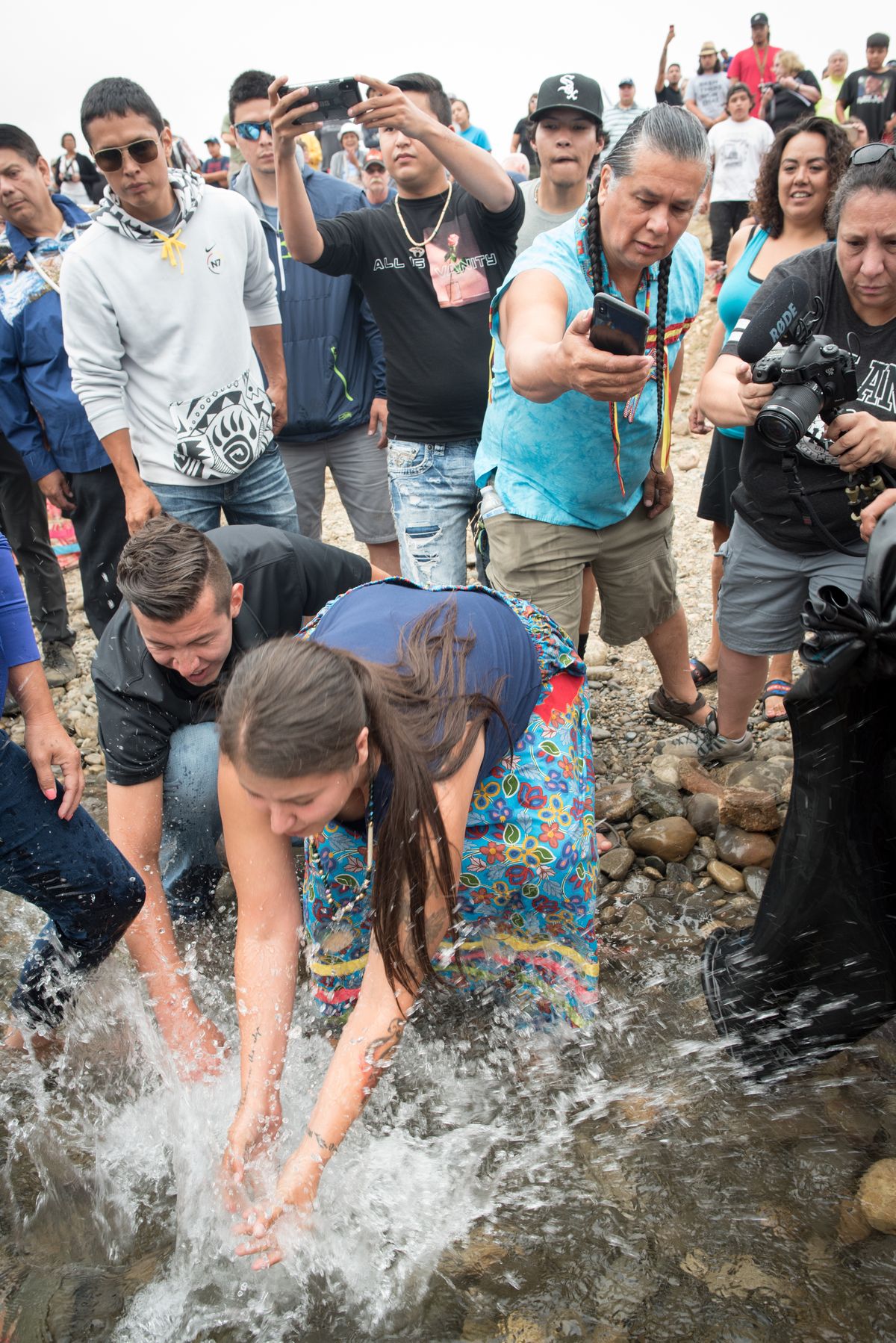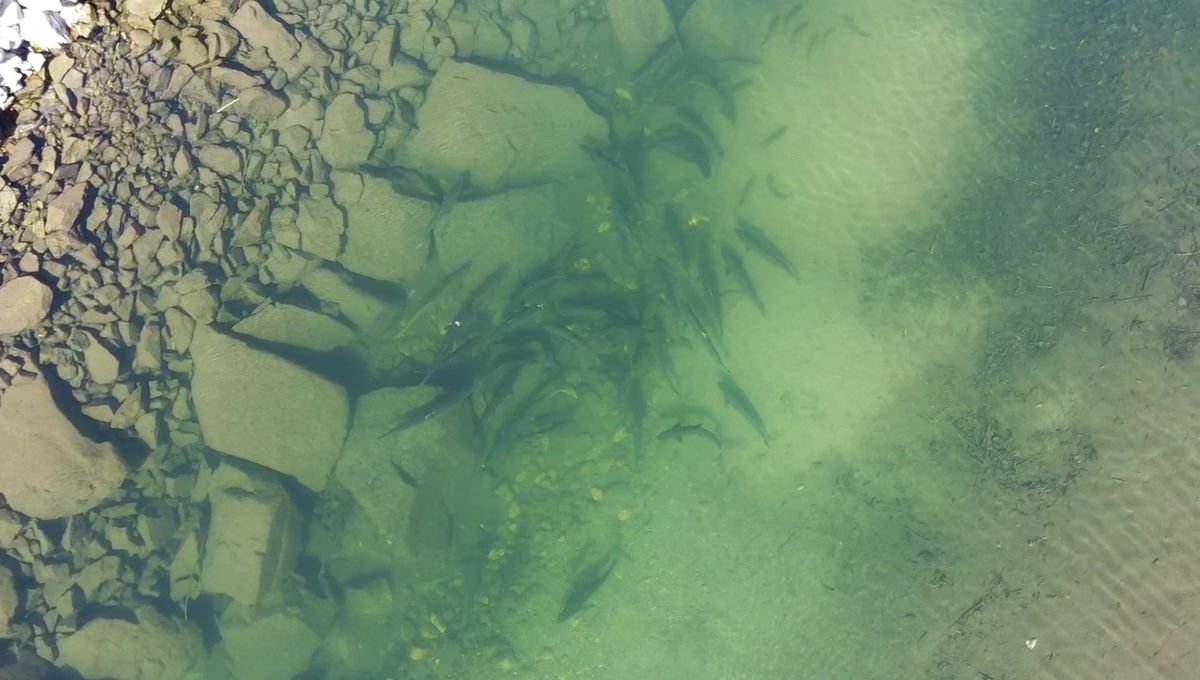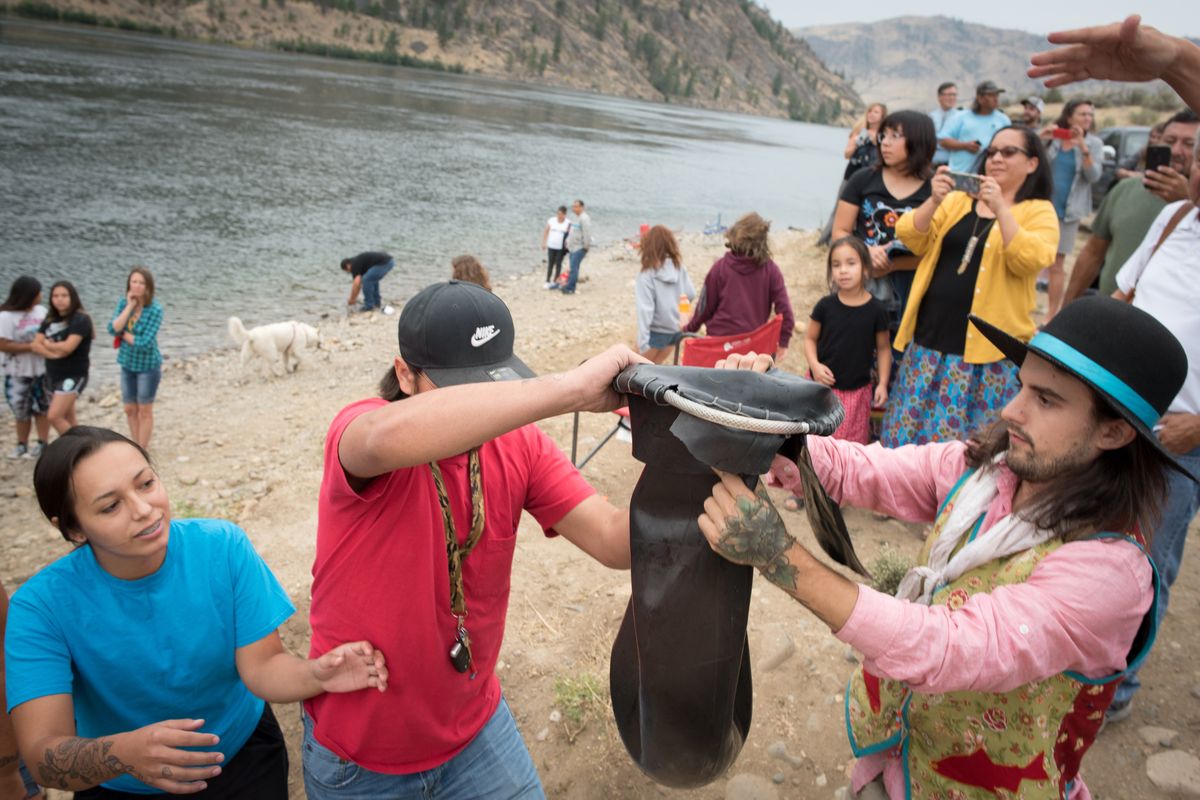For the first time in more than 80 years, salmon spawning in the upper Columbia River
Pictured here is one of the 36 redds found by Colville tribal fishery biologists in the Sanpoil River, a tributary of the Columbia River. (Courtesy of the Colville Tribe)
For the first time in more than a generation, chinook salmon have spawned in the upper Columbia River system.
Colville Tribal biologists counted 36 redds (a gravely nest in which female salmon lay their eggs) along an 8-mile stretch of the Sanpoil River, a tributary of the Columbia, in September.
“I was shocked at first, then I was just overcome with complete joy,” said Crystal Conant, a Colville Tribal member from the Arrow Lakes and SanPoil bands. “I don’t know that I have the right words to even explain the happiness and the healing.”
The news is a step toward full reintroduction of the migratory fish and another watershed cultural moment for the region’s tribes. Since the Chief Joseph and Grand Coulee dams were built in the 1950s and 1930s, respectively, salmon have been blocked from returning to spawning beds in the upper Columbia River.
For decades, tribal leaders and scientists have dreamed of bringing the fish back to their native beds. Since 2014, the Columbia River tribes have worked on a plan that examines habitat, fish passage and survival among other things.
“It’s an exciting project. It’s been rewarding to work on,” said Casey Baldwin, a research scientist for the Colville Tribe. “The long-term process of reintroducing salmon above Chief Joe and Grand Coulee is going to take a long time.”
In 2019, about 60 salmon were released above the Grand Coulee and Chief Joseph dams in a cultural event.
As a continuation of that project, tribal biologists released 100 fish 35 miles up the Sanpoil River in August to see how well they survived. Each fish was outfitted with a PIT tag, a type of passive tracking device. Biologists checked on the hatchery-bred fish throughout the summer and in October started noticing that the fish were spreading out and spawning.
“Considering they weren’t from the Sanpoil, we were pleasantly surprised with the high rate of survival and the amount of spawning we were able to observe,” Baldwin said. “You never know if the fish are just going to turn around and swim away.”
The fact they did spawn is an affirmation of research done by the Spokane Tribe showing that, despite the dams, the river contains hundreds of miles of spawning and rearing habitat suitable for steelhead and spring chinook production.
“It is viable. It’s feasible for fish to use these areas,” said Chris Donley, the Washington Department of Fish and Wildlife’s regional fish program manager in Spokane. “What it says is there is opportunity there and it’s worth looking further.”
WDFW is assisting on the project, most notably by certifying that the fish are free of disease . In particular, the agency tested for a strain of infectious hematopoietic necrosis that can kill rainbow trout. Trout in the lower Columbia have built up an immunity to the disease. The populations in the upper, isolated as they have been, have no immunity.
“What we hope to do is prevent IHN from moving in the blocked area now, because we don’t want to affect the already existing trout population up there,” Donley said. “(However) long term that is going to be a risk that we are going to take.”
Whether a sustainable salmon population can return to the upper Columbia River is still an open question, Baldwin said. The challenges are numerous. The juvenile offspring from this year’s spawning will migrate downstream. How, and if, they survive the passage through reservoirs and dams is yet to be seen. And that’s just half the journey.
“Just having fish spawning in this one particular river does not prove that it’s feasible,” he said. “But it’s a good first step.”
When the dams were built, they drastically changed the Columbia River basin. Without a fish passage in the dams, salmon returning from the ocean were unable to reach their spawning grounds. When the 500-foot-tall Grand Coulee Dam was finished, it raised the waters behind it 380 feet, flooding more than 20,000 acres of land nearly overnight. One hundred miles upstream from the dam, the town of Kettle Falls was submerged by the rising waters, including a Native burial ground.
“My ancestors were all relocated when they put in the dam,” said Conant, the Colville Tribal member from the Arrow Lakes and SanPoil bands.
Prior to the dam’s construction, Kettle Falls was a small town founded by a passel of local white businessman (with the financial backing of a rich New Yorker) with resort-town aspirations. The area’s natural beauty, combined with fantastic salmon fishing, excited pecuniary fantasies.
But the area had a longer, deeper history among the region’s tribes. Called Shonitkwu in Salish, the native tongue of those people, it meant noisy water, as the river used to drop more than 50 feet, tumbling over a series of massive quartzite blocks. That frothing, roaring water could be heard from miles around.
Washington rivers, including the Columbia, seethed with salmon and Native people planned their years around the fish migration. In the Spokane region, Kettle Falls was the spot. Early written accounts recall a river so jammed with the big, nutritious fish, that one couldn’t throw a stick without hitting a salmonidae.
Each year, at least 14 Native American tribes, from throughout the region, gathered there to fish for salmon and trade news and goods.
Now, those falls are submerged under 100 feet or more of water.
The town itself, relocated as the waters rose, is a blip on U.S. 395 with a name that makes no sense.
Still, the salmon ceremony continues today, even if there are no salmon.
Each year in June, Conant and others paddle cedar-log canoes south from the Canadian border and north from above Grand Coulee Dam. They eventually meet at Kettle Falls, arriving near the summer solstice, the traditional time tribes would start fishing.
While full sustainable reintroduction is still a long way off, taking even one step closer to bringing salmon back to the river is worth celebrating.
“It’s like parts of your soul and heart were missing,” Conant said. “It’s a holistic healing.”




